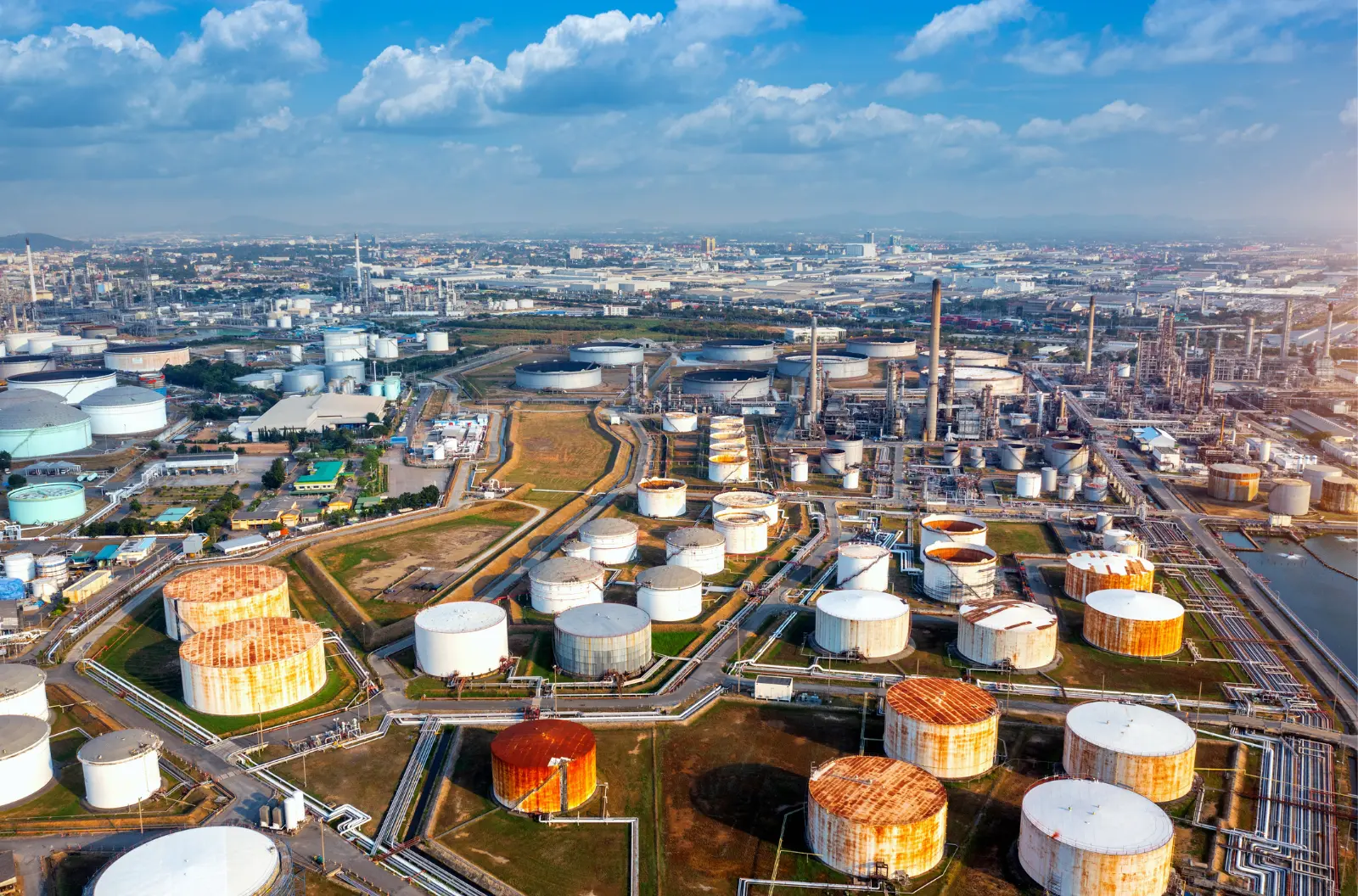TABLE OF CONTENTS
TABLE OF CONTENTS
Corrosion is a significant challenge in the oil and gas industry, leading to equipment failures, safety hazards, and increased operational costs. Addressing corrosion effectively is crucial for maintaining infrastructure integrity, ensuring safety, and optimizing economic performance. This article provides a detailed examination of corrosion in the oil and gas industry, the importance of corrosion inhibitors, types of inhibitors used, application methods, selection criteria, and the challenges involved in managing corrosion.
Brief Overview of Corrosion in the Oil and Gas Industry
Importance of Addressing Corrosion
Corrosion impacts every aspect of the oil and gas industry, from drilling and extraction to transportation and refining. The constant exposure to harsh environments, such as saltwater, high pressures, and varying temperatures, accelerates corrosion processes. Effective corrosion management is essential to:
Prevent equipment failure: Ensuring continuous and safe operations.
Extend the lifespan of infrastructure: Protecting investments in pipelines, storage tanks, and other critical components.
Reduce maintenance costs: Minimizing the need for frequent repairs and replacements.
Enhance safety and operational efficiency: Preventing accidents and ensuring reliable performance.
Economic and Safety Implications
The economic implications of corrosion are profound, with the oil and gas industry spending billions annually on corrosion control measures and related maintenance. Safety is another critical concern, as corrosion can lead to catastrophic failures, spills, and explosions, posing risks to personnel and the environment.
Understanding Corrosion in the Oil and Gas Industry
Types of Corrosion
Uniform Corrosion: This type of corrosion occurs evenly across the surface of a material, leading to thinning and eventual failure. It is predictable and often easier to manage compared to localized forms of corrosion.
Pitting Corrosion: Characterized by the formation of small, deep pits or holes in the material. Pitting is highly localized and can cause significant damage with minimal overall material loss.
Stress Corrosion Cracking (SCC): This type occurs when a material is subjected to tensile stress in a corrosive environment, leading to cracks and potential catastrophic failure.
Galvanic Corrosion: Occurs when two dissimilar metals are in electrical contact in a corrosive electrolyte, causing one metal to corrode preferentially.
Causes of Corrosion
Environmental Factors: Temperature, humidity, and salinity significantly influence corrosion rates. For instance, high salinity environments accelerate corrosion due to the presence of chloride ions.
Chemical Reactions: The presence of corrosive agents such as carbon dioxide (CO2), hydrogen sulfide (H2S), and oxygen can lead to various forms of corrosion. These chemicals react with metals, forming corrosive compounds.
Microbial Activity: Microorganisms, such as sulfate-reducing bacteria, can induce corrosion through their metabolic processes, producing corrosive byproducts like hydrogen sulfide.
Importance of Corrosion Inhibitors
Role and Benefits of Corrosion Inhibitors
Corrosion inhibitors are chemicals that, when added in small amounts to a corrosive environment, significantly reduce the rate of corrosion. The benefits include:
Preventing Equipment Failure: By mitigating corrosion, inhibitors help maintain the integrity of critical equipment.
Extending the Lifespan of Infrastructure: Inhibitors protect against the degradation of pipelines, tanks, and machinery.
Reducing Maintenance Costs: By decreasing the frequency of repairs and replacements, inhibitors lower overall maintenance expenses.
Enhancing Safety and Operational Efficiency: Inhibitors help prevent unexpected failures and ensure smooth, uninterrupted operations.
Types of Corrosion Inhibitors Used in the Oil and Gas Industry
Organic Inhibitors
Mechanism of Action: Organic inhibitors function by forming a protective film on the metal surface, preventing corrosive agents from reaching the metal. These inhibitors often contain nitrogen, oxygen, or sulfur atoms that adsorb onto the metal surface.
Common Examples
Amine-based Inhibitors: Effective in protecting steel structures in the presence of CO2.
Imidazolines: Widely used in oil production to protect against CO2 and H2S corrosion.
Inorganic Inhibitors
Mechanism of Action: Inorganic inhibitors work by either forming a passivating oxide layer on the metal surface or by precipitating insoluble compounds that block the access of corrosive agents.
Common Examples
Chromates: Used in cooling water systems to prevent corrosion.
Phosphates: Commonly used in boiler water treatment to control scale and corrosion.
Vapor Phase Inhibitors
Mechanism of Action: Vapor phase inhibitors (VPIs) or volatile corrosion inhibitors (VCIs) release vapors that condense on metal surfaces, forming a protective barrier against corrosion.
Applications and Examples
Packaging Materials: Used in the storage and transportation of metal parts.
Coatings: Applied to surfaces to provide long-term protection.
Combination Inhibitors
Benefits of Using Blended Inhibitors: Combination inhibitors utilize the synergistic effects of different types of inhibitors to provide enhanced protection. They are tailored to address specific corrosion challenges in complex environments.
Common Combinations and Their Applications
Organic and Inorganic Blends: Used in cooling systems to provide comprehensive protection.
VCI and Film Forming Inhibitors: Applied in pipelines to protect both the interior and exterior surfaces.
Application Methods for Corrosion Inhibitors
Batch Treatment
Description and Use Cases: Batch treatment involves periodically adding a high concentration of inhibitor to the system. This method is suitable for environments where continuous injection is not feasible, such as in pipelines during downtime.
Continuous Injection
Description and Use Cases: Continuous injection involves the steady addition of corrosion inhibitor to the system. This method ensures consistent protection and is widely used in pipelines, water treatment systems, and production wells.
Film Forming Inhibitors
Description and Use Cases: Film forming inhibitors are applied as a coating or through continuous injection to create a protective film on metal surfaces. They are particularly effective in protecting against CO2 and H2S corrosion in oil and gas production.
Selection Criteria for Corrosion Inhibitors
Factors to Consider
Type of Material to be Protected: Different materials require specific inhibitors to ensure effective protection. For example, inhibitors for carbon steel may differ from those for stainless steel.
Environmental Conditions: The temperature, pressure, and presence of corrosive agents influence the choice of inhibitor. High-temperature environments may require inhibitors with higher thermal stability.
Compatibility with Operational Fluids: Inhibitors must be compatible with the fluids in the system to prevent adverse reactions. This includes compatibility with oils, gases, and water.
Economic Considerations: The cost of the inhibitor and its application must be balanced against the potential savings in maintenance and replacement costs.
Challenges and Considerations
Environmental Impact and Regulations
Eco-Friendly Alternatives: The environmental impact of corrosion inhibitors is a growing concern. Developing and implementing eco-friendly alternatives is essential to comply with environmental regulations and reduce the ecological footprint.
Compliance with Industry Standards: Corrosion inhibitors must meet stringent industry standards and regulations. Ensuring compliance is critical for the safe and effective use of inhibitors in oil and gas operations.
Technical Challenges
Effectiveness in Extreme Conditions: Corrosion inhibitors must perform effectively under extreme conditions, such as high temperatures and pressures, which are common in the oil and gasindustry.
Long-Term Stability and Performance: Ensuring the long-term stability and performance of inhibitors is crucial for ongoing protection. This includes resistance to degradation and maintaining effectiveness over time.
Conclusion
Summary of Key Points
Corrosion is a significant challenge in the oil and gas industry, with substantial economic and safety implications. Understanding the types and causes of corrosion is essential for effective management. Corrosion inhibitors play a vital role in preventing equipment failure, extending infrastructure lifespan, reducing maintenance costs, and enhancing safety and operational efficiency.
Future Outlook for Corrosion Management in the Oil and Gas Industry
The development of advanced corrosion inhibitors, eco-friendly alternatives, and improved application methods will continue to evolve, addressing the industry’s needs for more effective and sustainable corrosion management solutions. By staying informed and adopting best practices, the oil and gas industry can mitigate the impacts of corrosion and ensure safe, efficient, and cost-effective operations.
FAQs
What are the main types of corrosion in the oil and gas industry?
The main types include uniform corrosion, pitting corrosion, stress corrosion cracking, and galvanic corrosion.
How do corrosion inhibitors work in the oil and gas industry?
Corrosion inhibitors reduce the rate of corrosion by forming protective films, precipitating compounds, or releasing vapors that protect metal surfaces.
What factors should be considered when selecting a corrosion inhibitor?
Factors include the type of material to be protected, environmental conditions, compatibility with operational fluids, and economic considerations.
What are the common application methods for corrosion inhibitors?
Common methods include batch treatment, continuous injection, and film forming inhibitors.
What are the challenges in using corrosion inhibitors in the oil and gas industry?
Challenges include environmental impact, regulatory compliance, effectiveness in extreme conditions, and long-term stability and performance.
Contact Us
Questions or looking for a quote?




